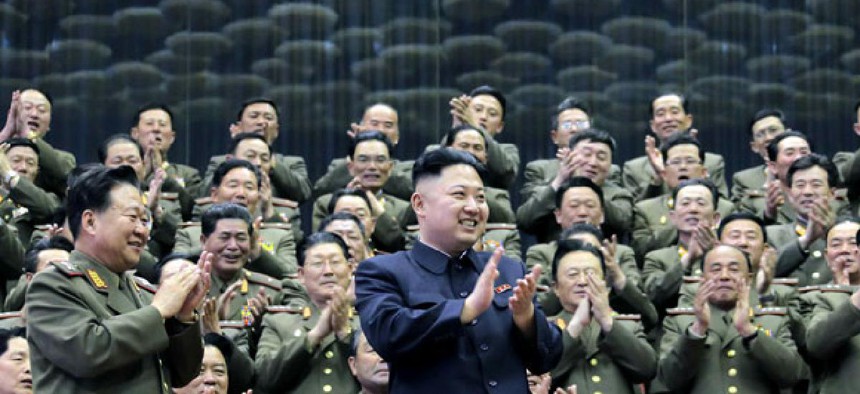
North Korean leader Kim Jong Un applauds as he visits an athletics contest held by Kim Il Sung University of Politics and Kim Il Sung Military University. Korean Central News Agency/AP
7 Reasons to Worry About North Korea's Weapons
Is the country bluffing or issuing real threats? Why we should pay attention either way.
It is getting so you need a scorecard to keep track of the North Korea crisis. Every day there are reports of new moves on both sides-- U.S. bombers flying to the Korean peninsula, interceptors shifting into position to shoot down missiles, North Korea restarting a nuclear reactor to produce bomb-making material and preparing for missile tests, and of course louder threats. Even harder to figure out are the real dangers; one day the White House says that there are no signs of disturbing military moves by the North, the next day Secretary of Defense Chuck Hagel trumpets that Pyongyang represents a "clear and present danger to the United States," and the next North Korea is warning foreigners to leave the peninsula.
The situation is confusing, but one thing is sure. These weapons are not going away and neither are the North Koreans. Pyongyang's arsenal could grow from a few bombs to, according to some estimates, as many as 50 by 2016, quite a lot for a small country, or any country for that matter. Also, odds are North Korea will adopt a dangerous strategy for using these weapons, similar to what NATO did during the Cold War. Faced with superior conventional military forces, just as NATO was with the Soviet Union and the Warsaw Pact, Pyongyang might threaten to "go nuclear" very early in a conflict to forestall defeat.
Of course, all may not go well for the North; Pyongyang's close friend China may head it off at the nuclear pass; the North might experience problems building more nuclear weapons; or the U.S. could strike a deal with the North that stops its growing arsenal. In short, we can hope for the best but should be prepared for the worst.
Why then should we be concerned about North Korea's WMD arsenal now and in the future? It boils down to seven reasons.






